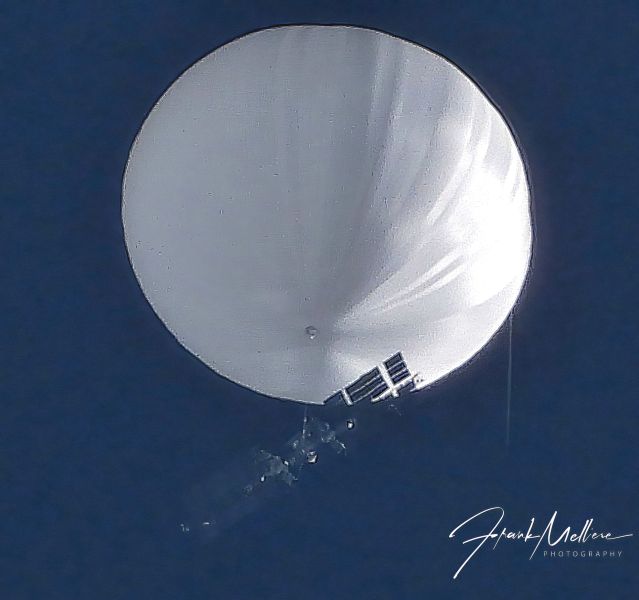StratoCat is an independent source of historical data and current news on the development of stratospheric balloons for scientific research, aerospace and military applications, and commercial exploitation of near space.
Balloon launches by year
Complete list of stratospheric balloon launches by year, ordered chronologically, with flight details, specific payload, images, etc.
Balloon launches by base
Detailed information and launch logs for main balloon launch facilities including balloon bases, airports, and ships around the world.
Detailed flight reports
Ordered chronologically, detailed accounts of many balloon missions containing description of the payloads, details of the flight, pictures, videos and links to external references.
Articles
The stories that shaped scientific ballooning. Events and happenings, many of them memorable and epic, some others funny, a few curious or strange and even some tragedies.
Balloon Encyclopedia
Brief overview of those individuals, organizations, programs and events that had contributed to some extent to the development of scientific ballooning.
On this day...
Remembering every month important events and dates of scientific ballooning history

In this edition:
- Summer NASA/CNES balloon campaign in ESRANGE
- Iwaya Inc. new Japanese altitude record
- JAXA campaign in Taiki
- 500 days of continuous flights for Aerostar
- World View's recent activity
- Space Perspective's balloon launch ship arrives home
- SCEYE Airship longer flights so far
- New player in the field: Balloon Tech Co.
- In the news: Julian Nott, Korea's balloon war, ESA Symposium, Halo Space, Hera Rising, Chinese balloon program, Urban Sky
World Balloon News is a somewhat regular bulletin containing balloon-related news of what's going on in the field, some speculation (fancy term for "insider data" from sources I can't reveal), historical images, and details about the new contents that week after week enrich this humble project.
Weekly Balloon News # 11 - Chinese balloon edition - March 4th, 2023
Contents:
- What kind of balloon it was?
- Not an isolated incident, and not a "fleet" of spy balloons.
- Previous sightings. Connecting the dots
- The first downing using missiles? Yes and No
- The "secret" Chinese balloon base
- Science on the edge of reality
- The "weather balloon" explanation 70 years later
Left: The best picture of the Chinese balloon, taken by Frank Melliere above Illinois
Recent News Archive
If you consider this website interesting or useful, you can help me to keep it up and running with a small donation to cover the operational costs. Just the equivalent of the price of a cup of coffee helps a lot. Click on the button at right for more information
.
Balloons in flight (updated 27-Jun-2025 - 09:29:50pm)
| Launched from | In flight since | Payload or experiment | Last known status |
|---|---|---|---|
 Hurley (SD) Hurley (SD) | 5/8/2025 | THUNDERHEAD FLIGHT 732 | STILL IN FLIGHT >>>> Follow the flight in real-time here |
 29 Palms (CA) 29 Palms (CA) | 5/20/2025 | THUNDERHEAD FLIGHT 756 | STILL IN FLIGHT >>>> Follow the flight in real-time here |
 Madras (OR) Madras (OR) | 6/27/2025 | THUNDERHEAD FLIGHT 771 | STILL IN FLIGHT >>>> Follow the flight in real-time here |
Last completed balloon flights (updated 27-Jun-2025 - 09:29:50pm)
| Launch base | Date | Experiment | Flight duration |
|---|---|---|---|
 Page (AZ) Page (AZ) | 2025/6/16 | TECHRISE STUDENT CHALLENGE | 7 h |
 Hurley (SD) Hurley (SD) | 2025/4/15 | THUNDERHEAD FLIGHT 728 | 61 d |
 Hurley (SD) Hurley (SD) | 2025/2/7 | THUNDERHEAD FLIGHT 717 | 127 d |
 Andennes Andennes | 2025/5/31 | THUNDERHEAD FLIGHT 762 | 28 h |
 Vidalia (GA) Vidalia (GA) | 2025/5/6 | PAYLOAD UNKNOWN | 1 h 10 m |
 Wanaka Wanaka | 2025/4/16 | HIWIND (High-altitude Interferometer WIND Experiment) | 17 d 13 h 47 m |
 Ft. Huachuca (AZ) Ft. Huachuca (AZ) | 2025/5/25 | LIGHTNING 747 - ARCANE THUNDER 25 | 32 h |
 Ft. Huachuca (AZ) Ft. Huachuca (AZ) | 2025/5/25 | LIGHTNING 746 - ARCANE THUNDER 25 | 31 h |
 Ft. Huachuca (AZ) Ft. Huachuca (AZ) | 2025/5/25 | LIGHTNING 745 - ARCANE THUNDER 25 | 31 h 6 m |
 Ft. Huachuca (AZ) Ft. Huachuca (AZ) | 2025/5/25 | LIGHTNING 752 - ARCANE THUNDER 25 | 45 m |
 Ft. Huachuca (AZ) Ft. Huachuca (AZ) | 2025/5/23 | LIGHTNING 743 - ARCANE THUNDER 25 | 30 h |
 Ft. Huachuca (AZ) Ft. Huachuca (AZ) | 2025/5/23 | LIGHTNING 744 - ARCANE THUNDER 25 | 32 h |
 Ft. Huachuca (AZ) Ft. Huachuca (AZ) | 2025/5/22 | LIGHTNING 751 - ARCANE THUNDER 25 | 1 h |
 Empire Ranch (AZ) Empire Ranch (AZ) | 2025/5/21 | LIGHTNING 736 - ARCANE THUNDER 25 | 9 h 15 m |
 Four Pillars (AZ) Four Pillars (AZ) | 2025/5/21 | LIGHTNING 742 - ARCANE THUNDER 25 | 9 h |
 Four Pillars (AZ) Four Pillars (AZ) | 2025/5/19 | LIGHTNING 739 - ARCANE THUNDER 25 | 10 m |
 Ft. Huachuca (AZ) Ft. Huachuca (AZ) | 2025/5/17 | LIGHTNING 749 - ARCANE THUNDER 25 | 30 m |
 Ft. Huachuca (AZ) Ft. Huachuca (AZ) | 2025/5/17 | LIGHTNING 750 - ARCANE THUNDER 25 | 20 m |
 Nogales (AZ) Nogales (AZ) | 2025/5/16 | LIGHTNING 737 - ARCANE THUNDER 25 | 10 h 30 m |
 Nogales (AZ) Nogales (AZ) | 2025/5/16 | LIGHTNING 738 - ARCANE THUNDER 25 | 10 h |
 Wanaka Wanaka | 2025/5/4 | SUPER-PRESSURE BALLOON TEST SN12 | 9 d 6 h 36 m |
 Yakima (WA) Yakima (WA) | 2025/3/7 | LIGHTNING - STATIC FOCUS 3 | --- |
 TIFR Hyderabad TIFR Hyderabad | 2024/8/12 | PAYLOAD UNKNOWN | |
 TIFR Hyderabad TIFR Hyderabad | 2025/3/29 | PAYLOAD UNKNOWN | 9 h |
 TIFR Hyderabad TIFR Hyderabad | 2024/12/5 | PAYLOAD UNKNOWN | |
 Hurley (SD) Hurley (SD) | 2025/3/28 | THUNDERHEAD FLIGHT 727 | 4 h 45 m |
 Atlas Alpha Jaen Atlas Alpha Jaen | 2025/3/26 | PAYLOAD UNKNOWN | --- |
 Indiantown (FL) Indiantown (FL) | 2024/4/22 | THUNDERHEAD FLIGHT 684 | 336 d |
 Webster (SD) Webster (SD) | 2025/3/21 | THUNDERHEAD FLIGHT 726 | --- |
 Webster (SD) Webster (SD) | 2025/3/20 | THUNDERHEAD FLIGHT 725 | 24 h |
 Chamberlain Muni (SD) Chamberlain Muni (SD) | 2025/3/17 | THUNDERHEAD FLIGHT 724 | 28 h |
 Hurley (SD) Hurley (SD) | 2025/1/24 | LIGHTNING FLIGHT 716 | --- |
 McMurdo McMurdo | 2024/12/21 | SALTER TEST FLIGHT UNIVERSAL | 11 d 6 h 57 m |
 TIFR Hyderabad TIFR Hyderabad | 2025/1/17 | ELECTRIC FIELD STUDIES | --- |
 Baker Muni Baker Muni | 2024/8/4 | STRATO (Strategic Tactical Radio and Tactical Overwatch) | 34 d |
 Fort Sumner (NM) Fort Sumner (NM) | 2024/9/4 | HASP 2024 (High Altitude Student Platform) | 11 h 30 m |
 Page (AZ) Page (AZ) | 2024/8/31 | STRATOLLITE | 28 d |
 Hurley (SD) Hurley (SD) | 2024/9/26 | FIGARO (5G Array for Lunar Relay Operations) | 9 h |
 Fort Sumner (NM) Fort Sumner (NM) | 2024/9/24 | DR-TES (Dilution Refrigerator Transition Edge Sensor) | 9 h 52 m |
 Santa Fe County (NM) Santa Fe County (NM) | 2024/9/3 | THUNDERHEAD FLIGHT 701 | 21 d 5 h |
 Santa Fe County (NM) Santa Fe County (NM) | 2024/9/3 | THUNDERHEAD FLIGHT 703 | 21 d 8 h |
 Fort Sumner (NM) Fort Sumner (NM) | 2024/9/23 | TIM (Terahertz Intensity Mapper) | 8 h |
 Santa Fe County (NM) Santa Fe County (NM) | 2024/9/3 | THUNDERHEAD FLIGHT 702 | 20 d 7 h |
 Santa Fe County (NM) Santa Fe County (NM) | 2024/9/2 | THUNDERHEAD FLIGHT 705 | 7 h 35 m |
 MS Voyager MS Voyager | 2024/9/15 | NEPTUNE EXCELSIOR CAPSULE TEST #1 | 8 h |
 Capitan (NM) Capitan (NM) | 2024/9/12 | THUNDERHEAD FLIGHT 707 | 18 h 20 m |
 Capitan (NM) Capitan (NM) | 2024/9/12 | THUNDERHEAD FLIGHT 706 | 15 h |
 Le�n Le�n | 2024/9/10 | BLUE JAY 2024 | --- |
 Fort Sumner (NM) Fort Sumner (NM) | 2024/8/31 | EXCITE (Exoplanet Climate Infrared Telescope) | 10 h 13 m |
 Guelmim Guelmim | 2024/8/7 | THUNDERHEAD FLIGHT N258TH | 2 h 15 m |



